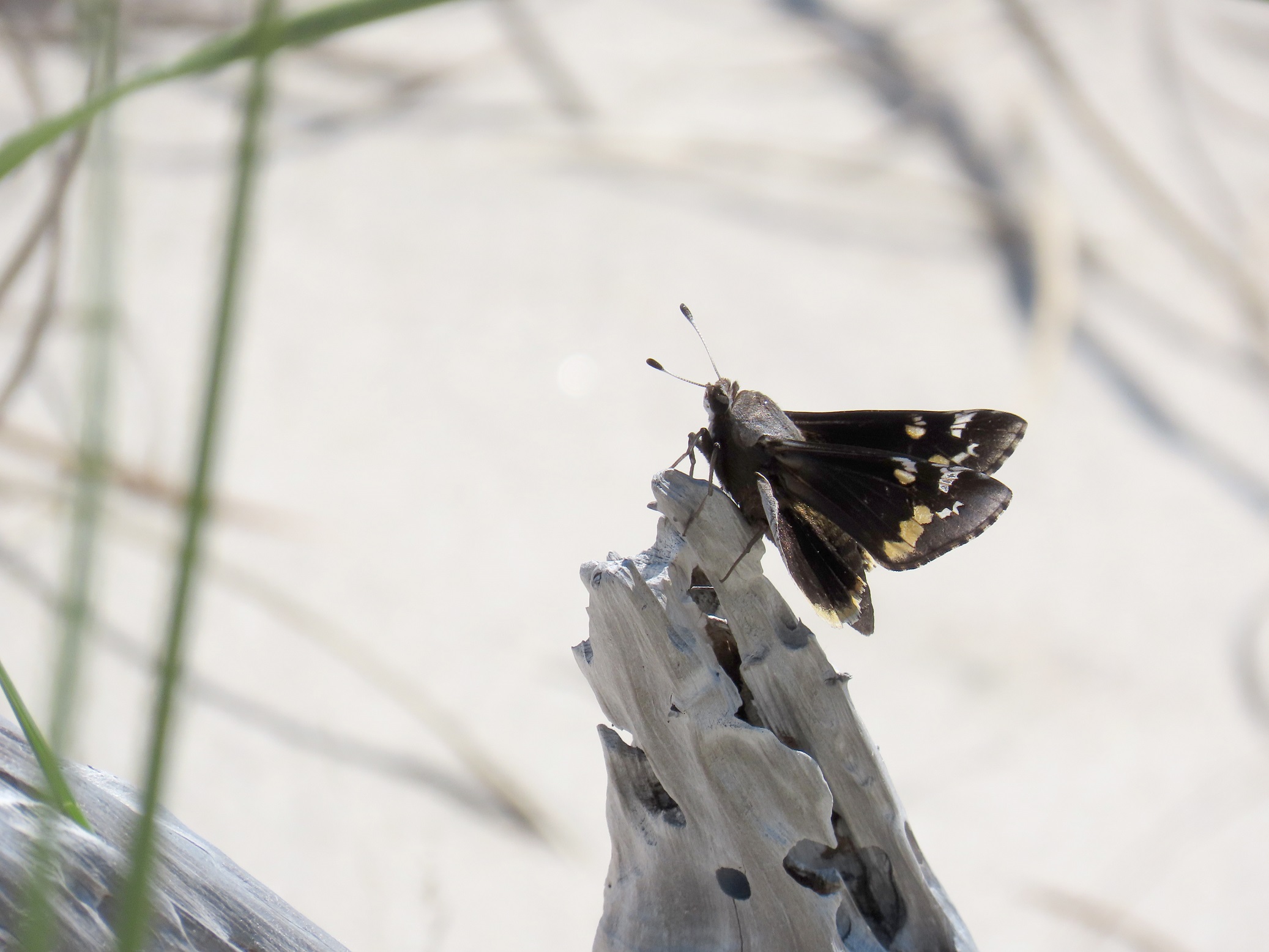
This week for Flora and Fauna Friday it’s the homecoming for an odd and ephemeral butterfly, the Yucca Giant-Skipper (Megathymus yuccae).
The Yucca Giant-Skipper is found from California to North Carolina, with a scattered distribution here in South Carolina, and is a fairly rare butterfly across its range. They tend to inhabit dry, open, sandy habitats, and only those where Yuccas thrive. These include the Longleaf Pine savannas of the Sandhills, the maritime fringes of the Sea Islands, and the beach dunes of our barrier islands.

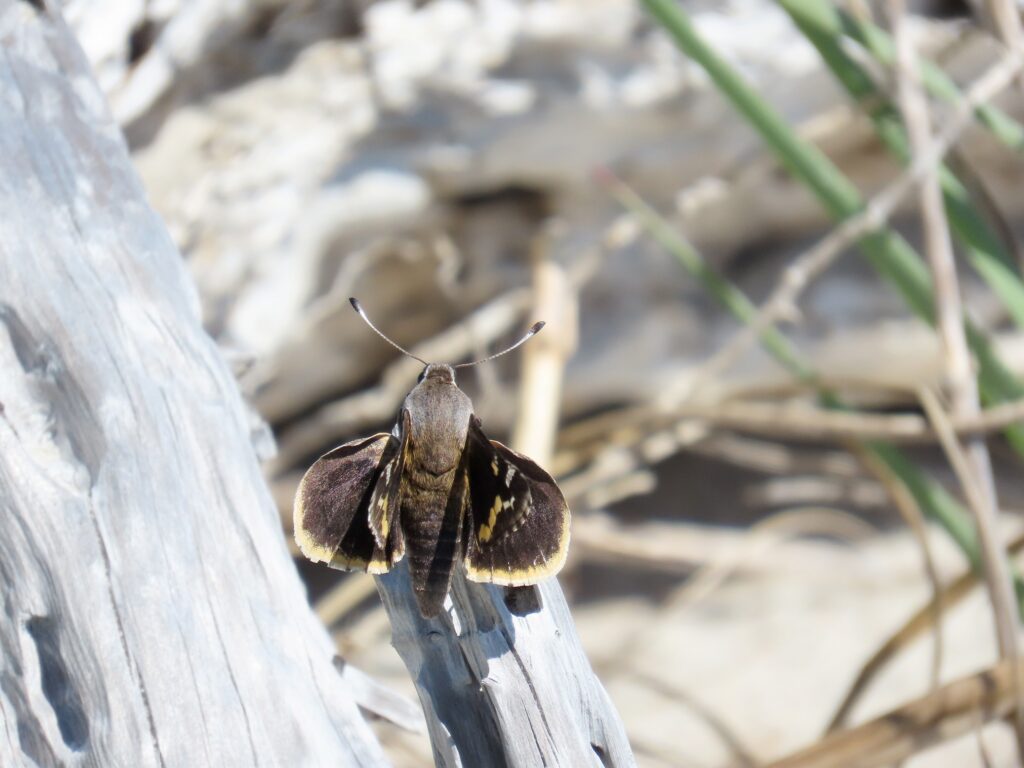

The Giant-Skippers are South Carolina’s largest members of the Skipper butterflies, family Hesperidae. Like most Skippers, they have compact triangular wings and a torpedo-shaped body. Unlike most Skippers, they’re giant! In appearance, our Yucca Giant-Skipper is a rich ebony-brown across the body and wings. Those wings are accented by spots of silver and golden-tan, with tan fringes above and silver frosting below that bleeds down onto the flanks of the body. In profile, they look like no other butterfly. I liken them to a thumb with wings.
The Yucca Giant-Skipper is big for a Skipper and dense for a butterfly. By weight, they’re likely our heaviest butterfly species, despite having half the wingspan of our larger Swallowtails. This barrel-chested bug needs that mass for two things: power and fuel. The Yucca Giant-Skipper is the drag racer of the butterfly world. They’re fast, very fast; all gas, no brakes. From firsthand experience, I can tell you they effortlessly cruise at about 30mph as their baseline speed. There are even anecdotal accounts of Giant-Skippers breaking 60mph! Their speed is thanks to their body size, which allows them to cram in the muscle mass to fly faster than many songbirds. To maintain that speed, they have to burn the body fat they carry around as fuel, but there’s no topping off their tank. Yucca Giant-Skippers, as adult butterflies, don’t drink nectar from flowers. They don’t eat anything at all. Once one emerges from its chrysalis, its only goal is to reproduce and start the next generation. Yucca Giant-Skippers only fly in one brood each year, which emerges in mid-April. Adults are often only active in the morning, resting all afternoon while hidden in the vegetation. Their scarcity, brief flight-time, and speed all make them a very hard butterfly to lay eyes on.
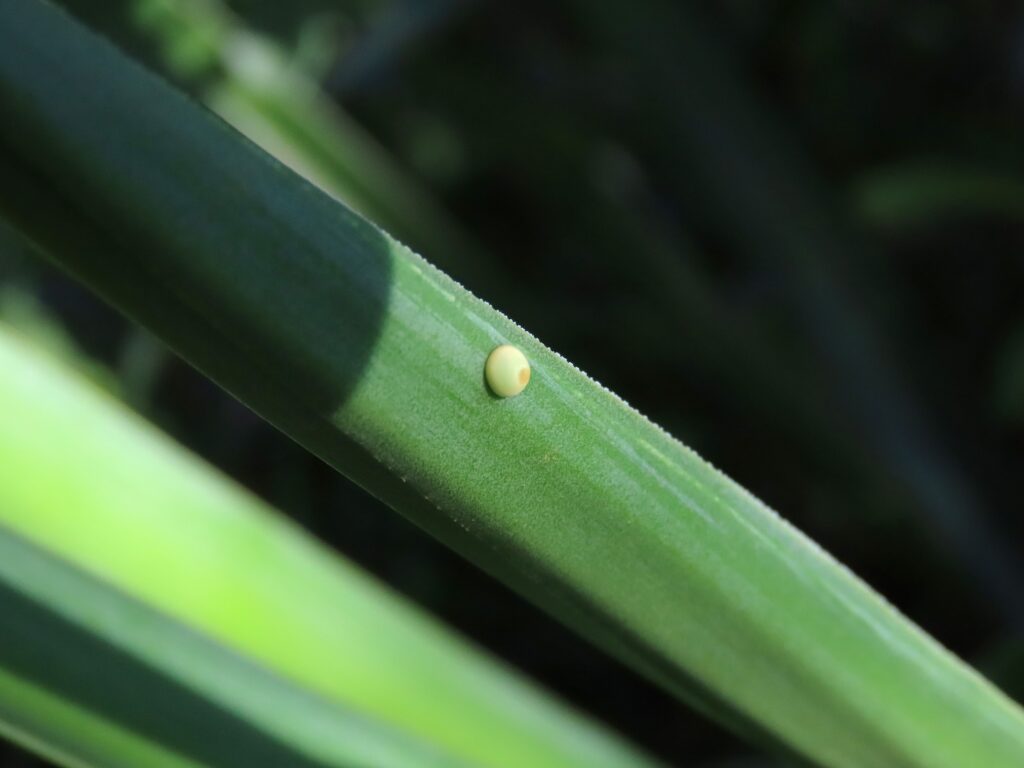
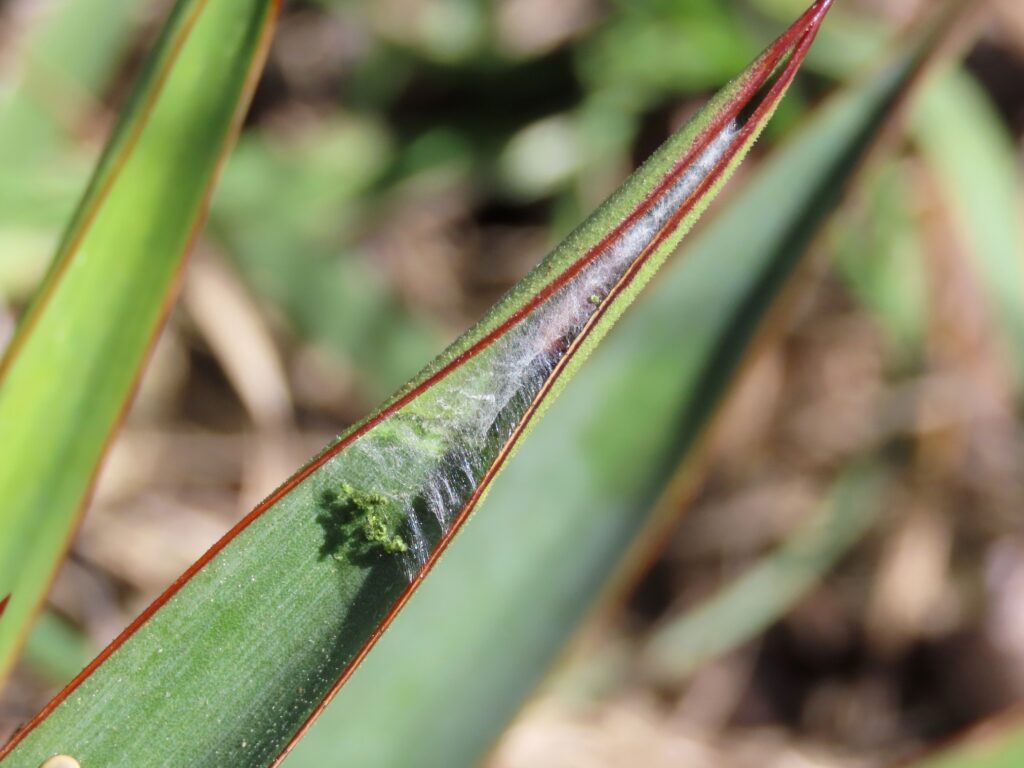


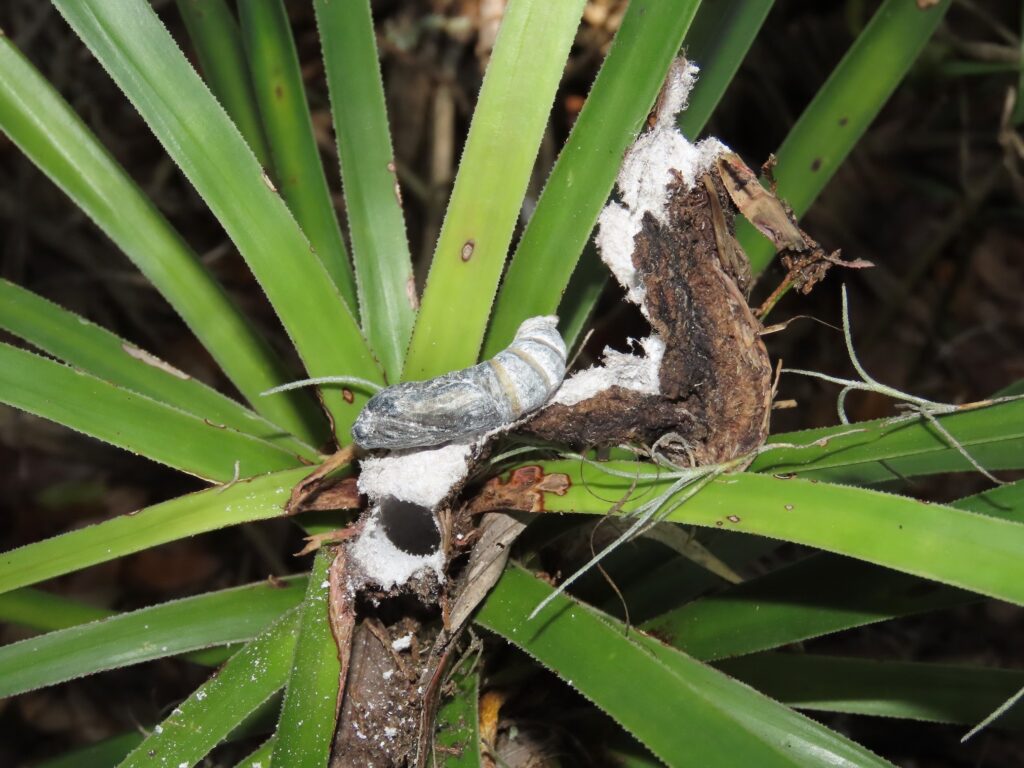
Female Yucca Giant-Skippers lay eggs on, predictably, the leaves of Yucca plants. Eggs are an eighth-of-an-inch wide and pale-green fading to khaki, with a small dark dot at the top. Once hatched, the young caterpillar crawls to the tip on top of a Yucca blade, where it weaves a parasol of silk between the leaf edges and hides within. There it feeds on the leaf tissue, turning the blade tip brown. Once it reaches about an inch in length, the walnut-brown worm wriggles its way to the bud of the Yucca, where it begins to bore a hole straight down into the stem and root of the plant. Here the caterpillar will feed on the starchy wood of the Yucca to pack on the pounds. The caterpillar maintains a hole back at the top of the stem. Around this exit it slowly builds a tubular “tent” out of waste and silk, inside of which it will eventually undergo metamorphosis and emerge a chubby cherubic speed-demon the following spring.
The Yucca Giant Skipper was historically relatively abundant around Charleston, but they practically vanished some decades ago. Then, out of the blue in 2022, they returned home! It’s assumed there was a recent bumper crop of Yucca Giant-Skippers somewhere inland, and those over-crowded butterflies headed straight to the beach for their first and only spring break. Since then, their populations have been strong on the Sea Islands, to include Edisto Beach. It’s almost like they never even left.